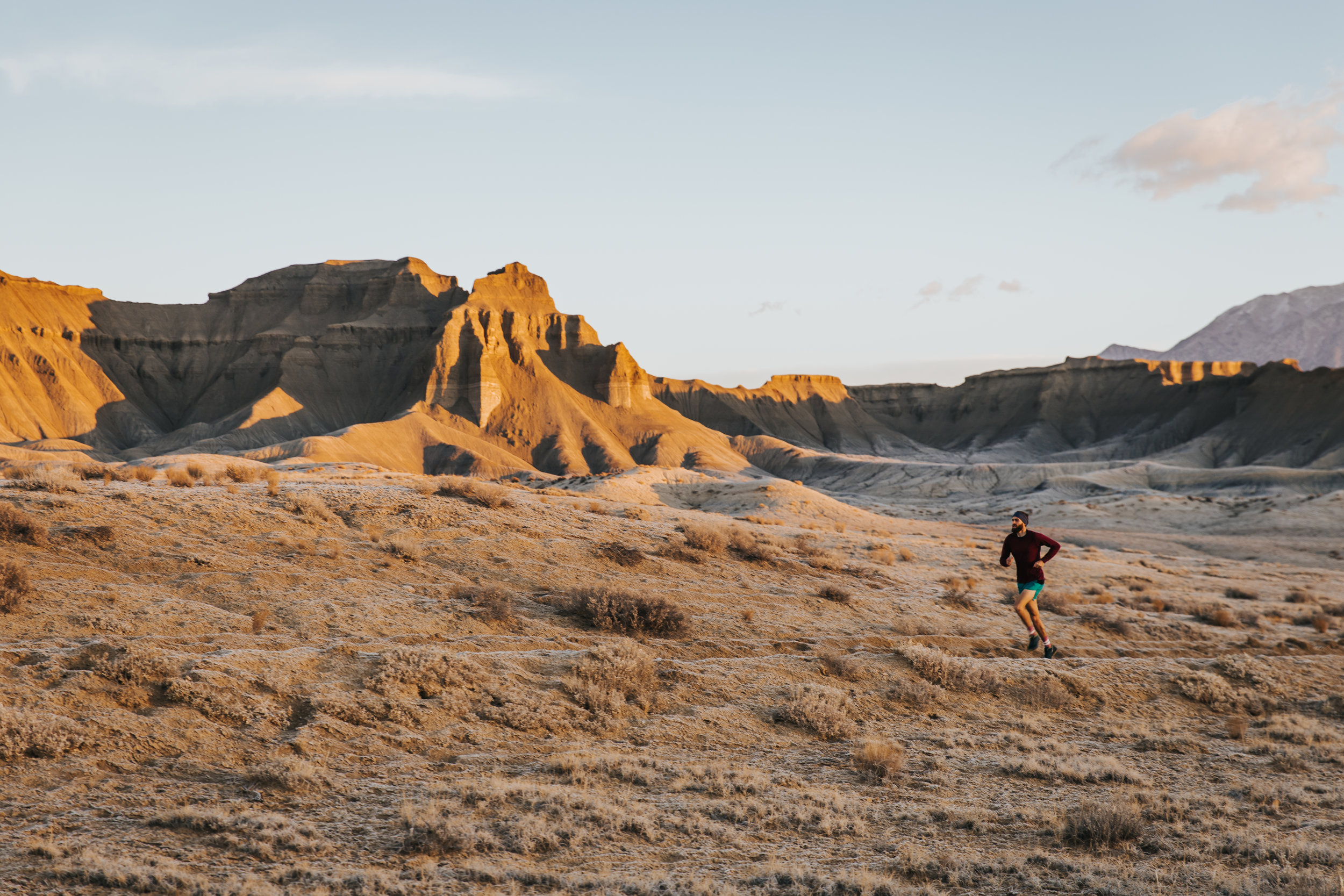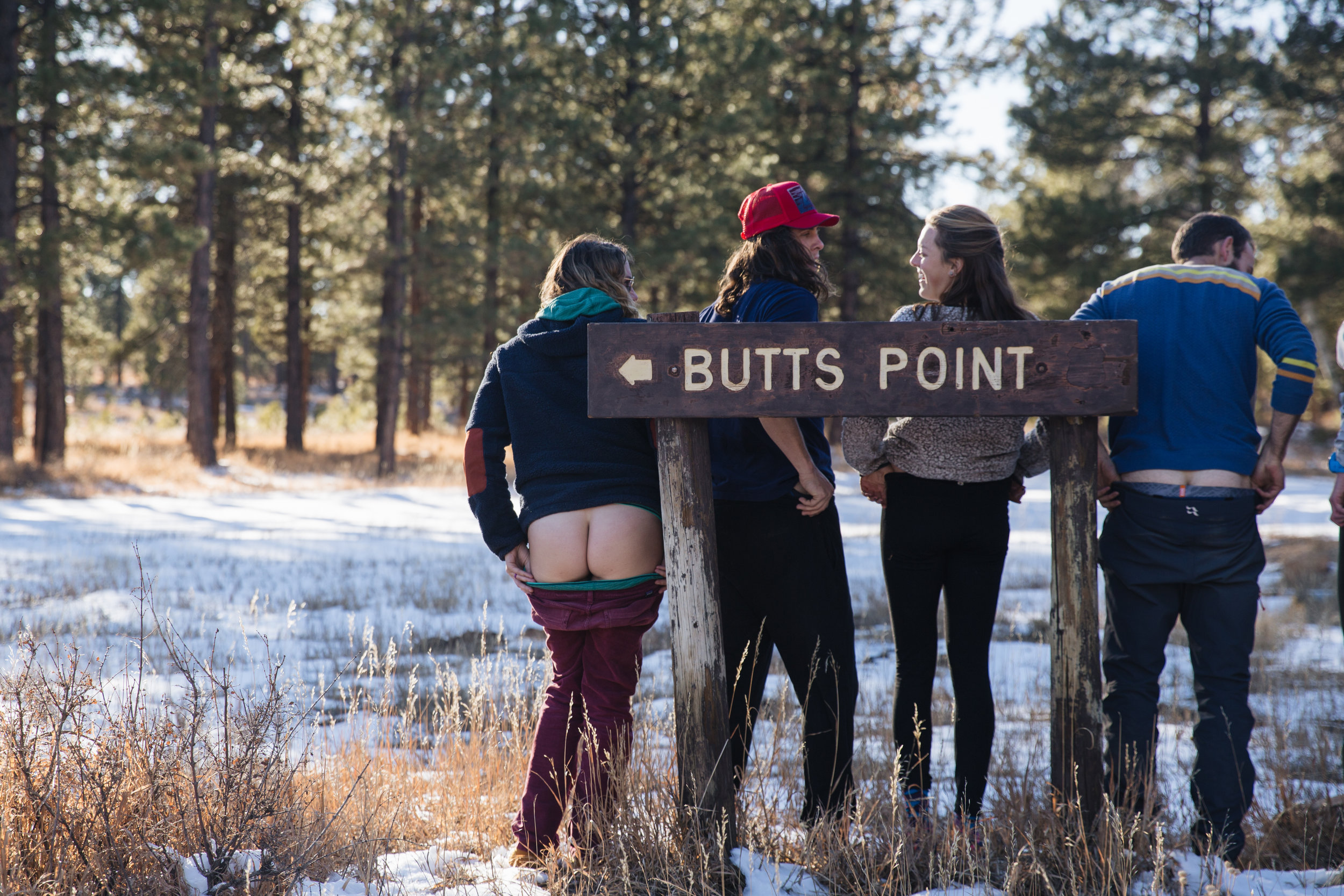Side By Side
Stay Wild
Two Love Stories by Two Mountain Climbers
By Charlotte Austin and Patrick Mauro
@charlotteaustin // @patrick.mauro
HER SIDE
Our first date was stupidly romantic — a luscious sunset, crisp cocktails, freshly cracked saltwater crab — right up until the moment I gave him explosive liquid diarrhea.
We’d been in touch months before, and there’d been loose correspondence while I traveled for my work as a mountain guide. We traded emails while I was on Alaskan mountains, Russia’s highest peak, and a Mongolian expedition. It was late August when my plane landed in Seattle, and less than 24 hours later, I looked at him through sunglasses still covered in dust from the steppe.
He leaned toward me. I put my hand on his chest, my flat warm palm firm against the open v-shaped slice of skin at the top of his button-up shirt. “Maybe we shouldn’t kiss,” I said. “I’m shitting my brains out. We visited a yurt. A Mongolian family offered me fermented camel milk. Now I’m peeing out my ass. I’ve been on a diet of Gatorade and Imodium.”
He shrugged. “That stuff isn’t transmittable by mouth,” he said. “I like you. Kiss me.”
I did. He tasted like sunshine and saltwater and honesty. I remember how it started. I don’t remember stopping.
Two days later I got a text from Chicago, where he’d flown for a business meeting. “I’m at a walk-in clinic,” he wrote. “Just tell me which antibiotics I need.”
I texted him the details: ask for the strongest Z-pack imaginable. Then I immediately texted all of my friends, too. “You’re not going to believe this,” I wrote. “Remember that dude I went on a date with? He’s got the shits, too.”
My best friend wrote back immediately. “If he’s still calling you after this fiasco, you should marry him.” I started to write her a sassy response, then stopped typing to pick up his call. We talked for three hours that night, each sipping electrolytes and chewing dry crackers.
He moved in three weeks later, slowly unloading his belongings from the Rubbermaid tubs he kept in the back of his car. It was rash, a little impractical. I cleaned out a drawer in my bathroom. He left a pair of shoes. The sex was fun, but what I remember most is that we couldn’t stop talking. Late at night, while we were running errands and buying milk and sliced turkey and too much nice cheese, we told each other the truth — the kind of truth that’s hard to even admit to yourself, where it just spills out of you before you’ve even realized what you’re going to say. The kind of truth that makes you realize you’ve just admitted your deepest soul, the things that matter, the points on the scatter plot of life that connect to tell your most real stories.
I told him about my dreams. He told me about his ideas. We laughed. I cried, sobbing into his chest until I dry-heaved on the bathroom floor. Every time I work up the courage to admit my weakness, he teaches me that every quirk is a strength too.
We fight. Sweet Christ, we fight. But there has never — not for one single instant — been a moment where I’ve doubted that he’s the one. In past relationships, I’ve been ready to torch the fuckers and leave in a cloud of righteousness, but in this one — well, it’s the first time that I’ve truly felt like part of a team.
Six months after our first date, we drove together from Salt Lake City to Seattle. We stayed in a cheap casino, ate greasy take-out, followed signs to the annual cowboy poetry convention. It was a romantic road trip, but I remember feeling grumpy because I was scared of that nebulous in-between state that happens after you’ve cleared space for somebody you love but before they’ve fully moved in. I didn’t tell him that, but he knew.
He found a hot springs in the mountains, and we drove too far out of our way to soak at sunset under the big desert sky. I stripped off my clothes, feeling the bathtub-warmth move up my thighs as I stepped into the pool. Then the sandy bottom fell away, and I slid, off-kilter, into the depth. I choked, sputtering a mouthful of water before finding my balance as I swam. But then I kept swimming, lap after lap of that tiny green pond, and I thought: Maybe I do know how to do this after all.
HIS SIDE
I first wrote her from Everest Base Camp. I was busy climbing, getting ready to make a go at the mountain. Curled in a sleeping bag, my ungloved fingers darted through the cold air to peck out the words that would entice her. I wrote of things that had impressed other women: my bravado, my athleticism, my sensitivity. None of that worked, but I was persistent. Four months later and under the guise of asking her for business advice, we went on our first date. She asked me if we were flirting. I said yes. Maybe some of those things did work.
One month later, we drove to Hood River while forest fires smoldered on the banks of the Columbia. As sheets of rain draped across the river, we wrapped ourselves around each other in the back of her bean-shaped travel trailer. We discussed the color of love. The plush sensation of an excited heart wasn’t new to either of us, but we both had concerns. There was hesitation in our kisses. We were already naked, and as we pressed our emotions and dreams against each other, we began a more intimate process of stripping bare. The gray noise of droplets hitting the fiberglass roof filled the silence when we rebounded from each other’s revelations. The smoke cleared from the gorge. My love was orange. Hers was blue.
I intended to spend the fall and winter exploring the Rockies from the front seat of my SUV, but Seattle now had a gravity I didn’t want to escape. I changed my plans and lingered. She started to introduce me to her friends. They were climbers and writers and corporate types. I think they all liked me, but I felt isolated as I struggled to translate my decade in New York for a western audience. My adventures amid the cacophony of brick and steel in the Bowery didn’t seem to have value when the snow-felted slopes of the Cascades are your playground. But they did matter because they shaped me, and so I found connections. I was excited and encouraged because the more I knew the fixtures in her universe, the more I understood her.
We had our first real argument on the eve of my departure for a month-long trip to Wyoming. After that, I cried some nights, cuddling myself under a scratchy wool blanket I had stolen from our closet in Seattle. I’d watch my tears sink into the waves of fabric as my fingers traced the edges of a polaroid she gave me before I left Washington. The blanket wasn’t comfortable, but it provided comfort. It was a physical connection to her. Though we talked every night, the distance was caustic. Skype messages and missed calls were misinterpreted in the worst possible ways. That was digital ersatz love. That was hell. Still, it mattered that each of us saw that the other was trying. We invested in the relationship in ways that we could, even if they weren’t what the other person needed. And we never stopped believing in us. In past relationships, I’ve rooted myself in my self-sufficiency during moments of tension: If the relationship blows up, I’ll drink a lot of bourbon, but I’ll be fine. We are different. During our moments of discord, I never imagine a universe where we aren’t “we.”















